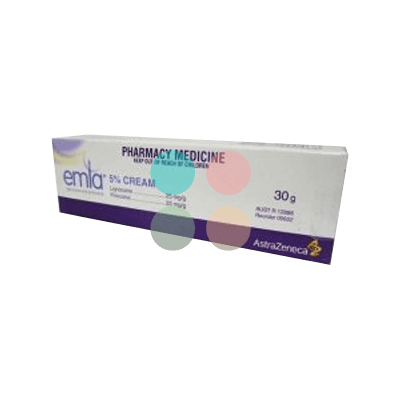Topical Anesthetic: What to Know About Emla Cream?

The aesthetic medicine field nowadays shows great and unexpected results, as well as makes people’s dreams about a perfect appearance a reality. Just think about how many procedures for skin improvement exist and vary depending on the patient’s needs, goals, treatment area of choice, and so on!
And of course, as we are talking about aesthetic medicine, we cannot omit the topic of anesthetic during the superficial surgical procedures; or, if to be more precise, about one specific product – Emla cream. The thing is, this very topical anesthetic is one of the most used and preferred medicines among beauty specialists around the world. It may be purchased both online, and offline (by the way, it is available at FillerSupplies as well), so aesthetic professionals don’t need to worry where to get the pain killer – now, it is very easy to get needed medications. What a wonderful world we live in!
So, without further ado, let’s dive into the world of aesthetic medicine and discuss all peculiarities and features you need to know before using Emla cream for your patients. As always, FillerSupplies is ready to educate you!
EMLA Cream with Lidocaine and Prilocaine – a Perfect Way to Eliminate Pain
 |
| $179 |
Emla is an effective way for pain elimination used for various medical purposes. Thanks to the unique formula (a combination of lidocaine and prilocaine), it works perfectly after putting it on the skin surface. After a few minutes, a treated spot and zones around it numb, and a person may feel a significant pain reduction.
Speaking about the areas where you may apply Emla cream, the main condition is that a product cannot be used on the damaged skin; otherwise, unpleasant sensations may disturb a client. A doctor may also apply the cream to the genital zone (the only thing, a thick layer is required in such a sensitive area). It is not recommended to use this product in the ears.
Emla is perfect for minor procedures, such as skin grafts, needle insertion, skin laser surgery, etc. It can also make the skin numb before injection higher lidocaine dose for a more serious medical procedure.
Even though there are some rumors about Emla and its influence on the patient’s body, most of them appeared only because the product is among the newest ones on the market. So, do not worry about male or female fertility, adverse effects on contraception, and other myths that exist out there.
How to Use EMLA Correctly for a Normal Intact Skin?
The first rules of the Emla cream application are pretty similar to any aesthetic health solutions available out there – a doctor should wash hands, disinfect the treated area, and put the product on the undamaged skin. It is not recommended to apply the remedy on the wounds and cuts (unless it was prescribed by a specialist).
Next, the cream should be applied; usually, it has to be used an hour prior to the procedure anesthetic is needed for; immediate treatment is not an option here. And do not be afraid if you think you’ve put too much Emla cream on the treated skin – the chances of it are minimal (if you are following the doctor’s recommendations, of course). We recommend not moving after putting the cream on in order to avoid product migration. However, mind that Emla cream is suitable for minor, aesthetic treatment; for more serious procedures, local anesthetic infiltration is suggested to eliminate any discomfort to the maximum. The skin will remain numb for several hours after the application, so we recommend being careful not to bump or hurt yourself accidentally. As you won’t feel anything in the treated area, the chances are you may cause some severe damage to yourself.
The cream itself shouldn’t be rubbed into the skin, just put on the patients’ treated area. A bandage or dressing is next placed on the zone to provide a better numbness effect; before the procedure starts, it has to be removed carefully. The amount of the cream is calculated depending on factors such as a patient’s age, skin and health peculiarities, weight, a spot the product should be used at, and so on.
After applications, you need to wash hands immediately (in case the remedy is prescribed to use on the hand, you shouldn’t do it). Be careful not to put Emla in or near your eyes, ears, and mouth. If it was accidentally done, rinse this zone with warm water or saline immediately.
Side Effects and Precautions
We think it’s not a surprise that, after using certain aesthetic medicine products and experiencing different medical procedures, the possibility of side effects afterward is very high. And Emla cream is not an exception here.
However, don’t be scared, those are not dangerous and are usually gone very quickly; let’s have a closer look. First, of course, we have minimal allergic reactions (those are possible if mild allergies for any component of the medication are present in patients). Then, of course, site reactions like skin rash, redness, slight burning, and skin lightening are pretty common as well. Mind that if they are not gone and only become worse, it is essential to immediately contact a healthcare provider to avoid any type of serious complications.
If the cream caused blurred vision, dizziness, trouble breathing, irregular heartbeat, seizures, and other severe symptoms, it should be removed as soon as possible, the treated areas have to be rinsed with warm water; a doctor should be contacted right after to get proper consultation, treatment, or medical advice.
Emla cream is not recommended to people who are allergic to lidocaine or prilocaine. If a person is allergic to anything else – it is better to inform the doctor; tell a medical specialist if there are any health issues, such as liver or kidney disease, heart problems, blood disorders, and so on. Pregnant and breast feeding women require a proper appointment and consultation with a medical specialist as well.
The Bottom Line
Emla cream for numbing skin is an effective product that guarantees a comfortable and pain-free aesthetic procedure to a patient. It is safe and effective, thus may be applied to almost everybody; the only thing which is required as a precaution is a consultation with a doctor (it is always better to make sure that any type of medical product is safe for you). We understand that a lot of people are afraid of the pain during treatments, that’s why we wanted to demonstrate that there is still a way of eliminating any unpleasant sensations. Hopefully, this article was valuable and informative; we always prepare the most needed information for you. Thank you for reading!
